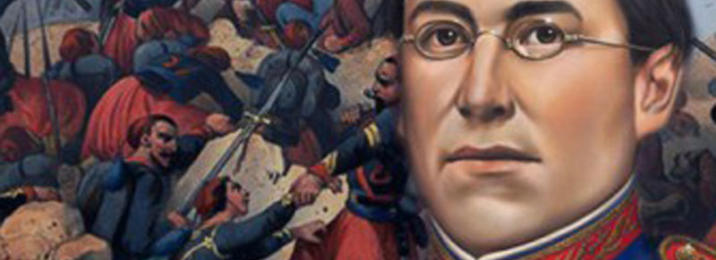General Zaragoza, A Native Texan
Have you heard of General Ignacio Zaragoza? Well, he’s a world-famous Mexican general and politician. Plus, he’s the reason why we celebrate Cinco de Mayo each year on the 5th of May. Often confused with Mexico’s Independence from Spain (this is actually on the 16th of September), Cinco de Mayo actually celebrates Zaragoza and a famous victory that was to go down in history. For decades, the 5th of May has been celebrated since the mid-nineteenth century in California, Texas, and various other southwestern states––and today is a primarily U.S.-based celebration.
So, what was Ignacio Zaragoza’s famous victory? With the help of only a small army, the native Texan took on the powerful French forces of Napoleon III during the Second French Intervention. On the 5th of May, 1862 General Zaragoza led the Mexican army that defeated invading French forces at the Battle of Puebla. In a true underdog victory, it was a victory that was a symbol of resistance against European imperialism.
General Zaragoza, The Man, The Legend
Zaragoza was born in 1829 in the Mexican Texas village of Bahía del Espíritu Santo, which today is known as Goliad, Texas. Ignacio was the second son born to parents Miguel G. Zaragoza and María de Jesús Seguín. Miguel Zaragoza was also a military man from Veracruz who had met his wife while stationed with his infantry regiment at Béxar in 1825. By 1830 Miguel received a promotion and purchased vacant land from the government to better his family’s financial status.
In 1834, Zaragoza’s family moved to Matamoros, Mexico, and then to Monterrey, Mexico, in 1844. In Monterrey, the young Ignacio entered a seminary, which meant that he was unable to enlist as a cadet during the Mexican-American War. It wasn’t until the early 1850s that Zaragoza joined the army supporting the cause of the Liberal Party, in opposition to dictator Antonio López de Santa Anna. Zaragoza eventually rose to command an army of volunteers who defeated Santa Anna in 1855. This then led to the re-establishment of a constitutional democratic government in Mexico. On 22 December, 1860, General Zaragozaalso played a crucial role in the battle of Calpulalpan, which led to the end of the reform war.
From April to October in 1861, Zaragoza served as Secretary of War in the cabinet of Benito Juárez. He later resigned in order to lead the Army of the East against the Europeans who concluded earlier that year to invade Mexico. When Napoleon III invaded in the French intervention in Mexico, Zaragoza’s forces fought them at Acultzingo on the 28th of April in 1862, where he was forced to withdraw. Zaragoza fell back to the favorable defensive forts outside of the city of Puebla, and with his small army, beat back at the French at Fort Loreto and Fort Guadalupe. The French were eventually forced to retreat to Orizaba.
General Ignacio Zaragoza was loved and highly respected by fellow army men and civilians. He was particularly known for his empathy and humility–and always fought for better living conditions and training for his troops. During one of his regular visits to his wounded and sick men, he caught and died of typhus fever four months after his victorious battle at the young age of 33. In his honor, President Juárez decreed that same year to change the city’s name to Heroica Puebla de Zaragoza. He was buried in San Fernando Cemetery in Mexico City. Zaragoza’s body was later exhumed and transferred to Puebla, while his former tomb became a monument.
Are you looking for outstanding authentic legendary Mexican cuisine? Come to Benito’s in the Fairmount area of Fort Worth. Well-known for our breakfast dishes, pico de gallo, fresh guacamole, and margaritas. You’ll experience true Mexican cuisine with us at Benito’s.
To book a table, call us at 817-332-8633. To find out more, go to our website.






